The aroma of this plant is difficult to confuse with any other. Spice leaves are added to culinary products, used for medicinal purposes and cosmetology, and if you believe in tradition, then they say that it is also added to love potions. Basil is also decorative, and quite easily grown in an ordinary flower pot on the windowsill, providing household fresh greens. But in order for the plant to feel good, it should be properly looked after.
Material Content:
Basil: types and varieties with names

Among the great species diversity, you can always find the variety that meets the requirements of the gardener.
- Clove - can be grown on the windowsill all year round. The height of the bush reaches 55 cm.
- The clove flavor is a mid-season variety. Since it grows in height about 30 cm, it is perfectly suited for growing a house. The aroma of the leaves resembles cloves and this variety is successfully used for conservation.
- Basil - this variety has a height of only 15 cm. Suitable for both home and cultivation in a greenhouse and open ground.
- Marquise - this variety reaches a height of about 22 cm. The bush is dense, the taste of leaves with a slight proportion of peppercorn.
- Meatifolia or camphor. Leaves of this variety give a salty, peppery and at the same time richly tart aroma. Plant height up to 60 cm.
- Lemon is the most common variety. It has a good aroma and is undemanding to growing conditions.
- Caramel.The aroma corresponds to the name, suitable for cultivation in the garden.
- Velvet - tolerates freezing well. Can be used to flavor vinegar and oils.
- Greek. One of the most delicious varieties of plants. At the same time, it looks like a fluffy ball, which makes it very decorative.
- Aniseed basil. To the usual aroma of basil mixed notes of anise.
If the gardener expects to plant basil in the open ground, then it is better to choose early ripe varieties.
Growing basil from seeds at home
Such a plant can be cultivated at home.
When to plant basil for seedlings
Sowing basil at home can be carried out at any time, the only conditions for winter cultivation is re-exposure. Even when grown on a southern window in some regions, sunlight will not be enough for a photophilous plant.
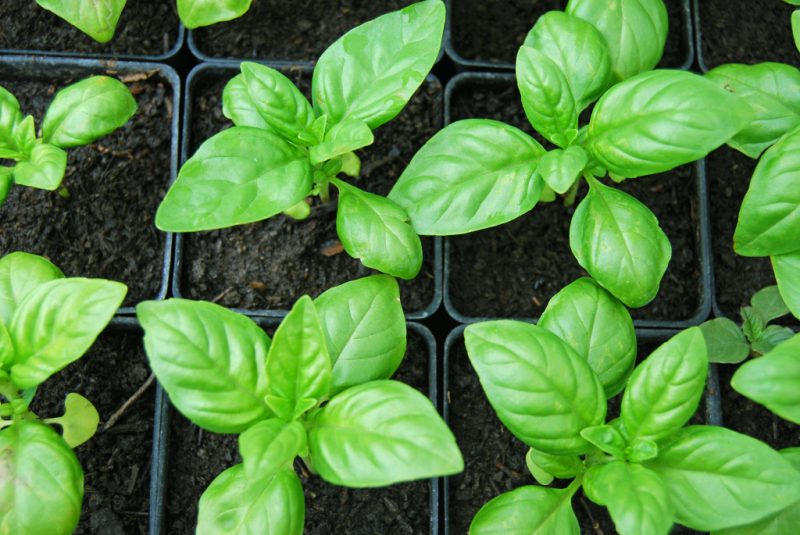
If the basil is supposed to be transferred to the garden over time, then it is better to plant it at the end of March. The plant develops quite quickly and in a few months spent at home, it will grow stronger and gain strength.
How to plant seeds for seedlings
Choosing a variety and buying planting material, you can begin to grow basil from seeds.
- Seeds for a day are soaked in a solution of potassium permanganate or biofungicides.
- Further, for better germination, they can be kept for several hours in a growth stimulator.
- Separately, germinating the seeds is not worth it, because the seedlings are tender, and when transplanted, they can be damaged. It is best to buy light soil for germination and sow basil there.
- The seeds do not need to be buried deep in the soil layer. First, loosen the earth well, scatter seeds on the surface of the seedling box, and then pour warm water on it. Together with the liquid, the seeds will go deeper into the ground, but not too deep. If desired, the surface layer can be sprinkled on top with dry soil, but it must be very thin.
- After that, the pot is covered with a film and the pot is placed in a warm, dark place. Periodically, the basil should be irrigated with water from a spray bottle.
- As soon as a scattering of tender sprouts appeared on the surface, the seedlings should immediately be placed in a bright place or under a phytolamp.
If there is no possibility of additional illumination, then it is worth putting the pot on the south or west window so that the young plant receives as much light as possible. You can optionally install a mirror screen - a light reflector.
Planting basil seedlings in the ground
Experienced gardeners are asked about when to plant basil for seedlings. Knowledgeable people answer that, any plant grown at home can eventually be transferred to the garden. The main thing is to properly equip it in a new place.
Basil seeds are worth buying at trusted locations and from reputable growers.
Landing site preparation
The future refuge for the basil is best prepared in the fall, but if this was not possible, then this should be done at least a week before the landing.
- The bed is worth digging carefully.
- Compost, cow and bird manure, potassium salt and superphosphate are added to the soil layer. All this in the following proportion: 5 kg + 10 g + 25 g, data given for 1 square. m. of land.
- The root system of seedlings is weak, so the earth must be well loosened first after digging, and then again before planting.
- The soil must be shed either with a disinfectant or potassium permanganate.
- To plant the basil, you should choose a warm sunny day and transfer the seedlings to fresh air, at the moment when the air has already warmed up.
Read also:perennial lupins - planting and care
Did you know that the precursors of basil can be tomatoes or beans, as well as cucumbers, lupins or legumes. Planting a spicy plant in the same place for several years in a row is not recommended.
Seedling planting timelines
Basil should be transferred to the open ground a month after planting seeds.But if the spring is cold, then of course, it is better to wait for the stable warm weather, and only then it is worth moving the basil to the garden.

It is important to remember that seedlings should be hardened. And if the basil does not move to the greenhouse, then after planting the ridge should be covered with film for the night during the week. Another option is the hardening of seedlings directly in the landing boxes, by moving it to the open air in the daytime.
Home Basil Care
If the planting of the basil was successful and it was decided to leave the spicy grass at home at hand, then it must be properly looked after.
Watering and feeding
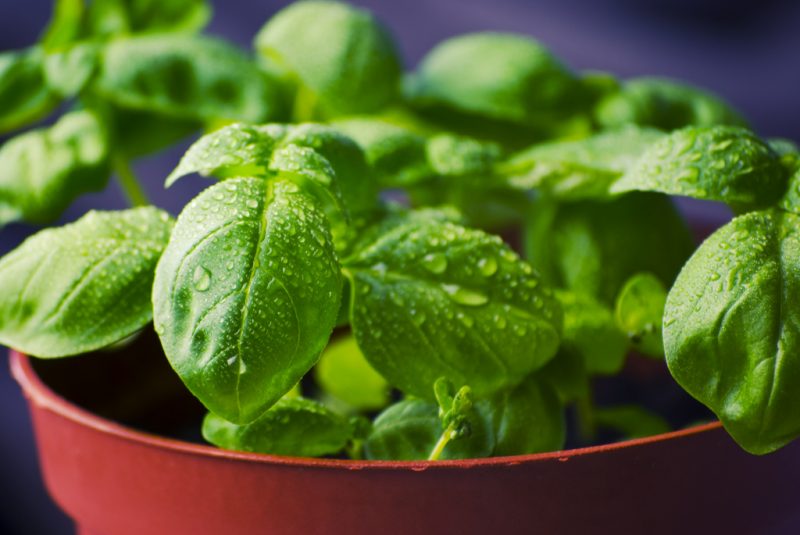
- It should be watered as the topsoil dries.
- With strong moisture, rotting of the roots may develop, so you need to carefully ensure that there is an outflow of water from the pot and periodically remove excess fluid from the sump.
- The plant loves spraying, and if possible it needs to arrange water procedures, but no more than twice a week.
- The culture should be watered with filtered and settled water. It is important that she is warm.
It is important to remember that all watering and spraying procedures are best done in the evening or on a cloudy day.
After the moisture has settled, the soil under the bush needs to be loosened so that the roots can get air.
Fertilizers can be applied together with watering, this method of feeding is most convenient.
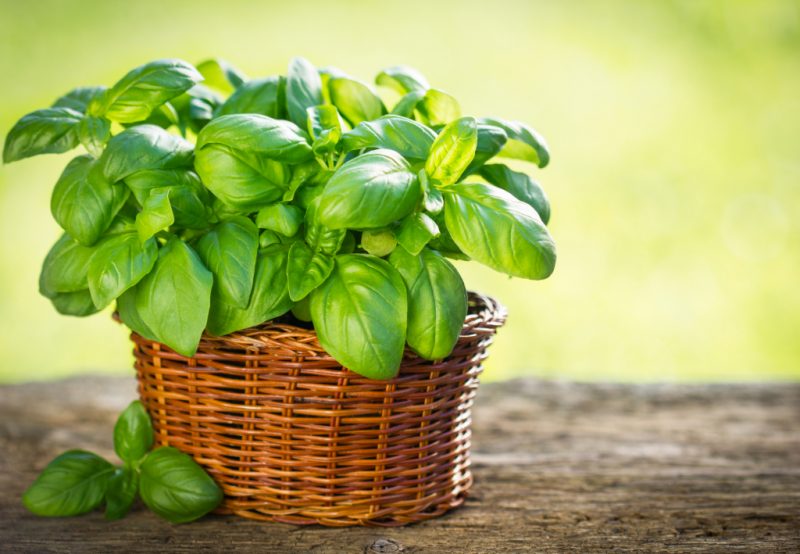
For a good growth of greens, you need to feed the plant with nitrogen fertilizers. For this, nitrofosk can be used.
It must be bred in the following proportions:
- 6 g of substance are taken per 1 liter of water.
It will be good if there is an opportunity to feed basil with organics. To do this, cow manure must be diluted in warm water and water the seedlings.
Pinching plants

Such a procedure is necessary so that the plant branches better, otherwise basil can release two branches and develop safely in this direction. To prevent this from happening after he releases four formed sheets, pinch him. After this, the plant will give additional branches.
How to cut basil correctly
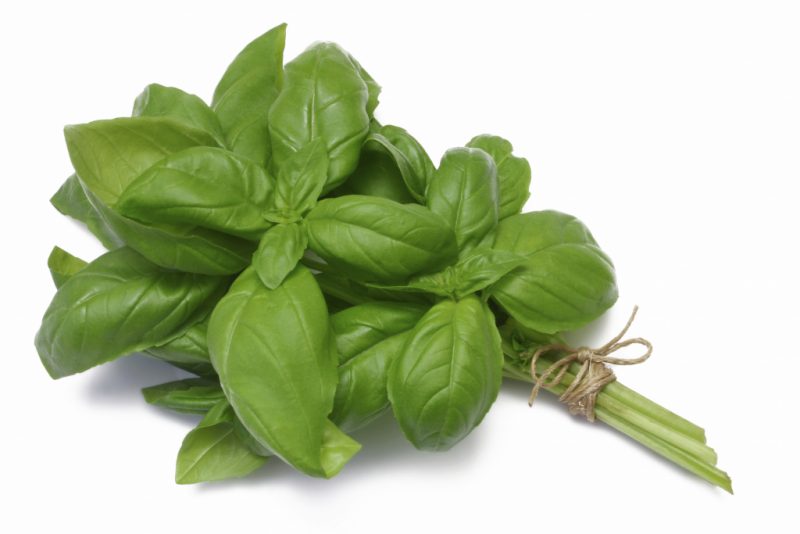
Cut basil for different purposes. You can just pick leaves for salad, or you can do a cut for drying. But the crop needs to be cut correctly so that the bush grows further.
- In order to use the plant for culinary purposes, it is enough to thin out the foliage on the bush. But do not pick leaves on one side, you need to harvest evenly.
- For drying, it is better to cut the plant along with the trunk, this will lead to a better branching of the bush, as well as preserving more useful properties when drying.
Properly dried basil will give its aroma and taste for a long time.
Pest and Disease Control
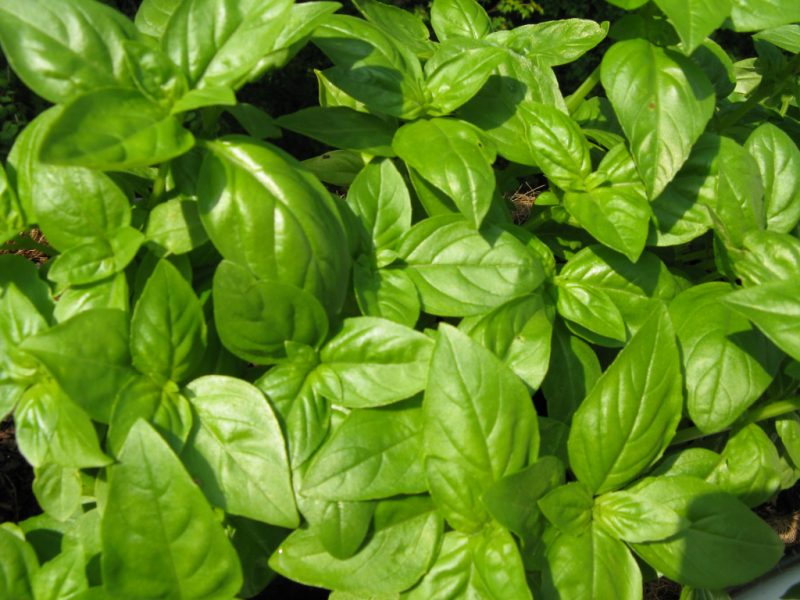
Usually, with proper care and a comfortable microclimate, basil is not sick, but if there is increased humidity and the plant is grown at low temperatures, then it can be affected by pathogenic fungi.
- Gray rot. Such a disease usually affects those plants that grow in greenhouses. The disease can be recognized by the appearance of gray-brown spots on the foliage. Gray rot can be exterminated if sprayed with onion peel infusion. For one liter of water, husk is taken from five bulbs, it needs to be boiled, cooled and sprayed with a plant.
- Blackleg - This is a disease of seedlings. It occurs with excessive moisture, and if the gardener does not loosen the soil. Sick seedlings should be eliminated and a new batch sown in fresh soil.
- Fusarium Such a nuisance may occur due to the fact that the soil and soil were not disinfected. The plant will gradually fade due to damage to the root system. You can try to correct the situation by applying biofungicides, but it is better to plant new plants.
Interesting fact! The aroma of basil usually attracts insects to the garden, which will pollinate it, but pests, on the contrary, scare them away.












